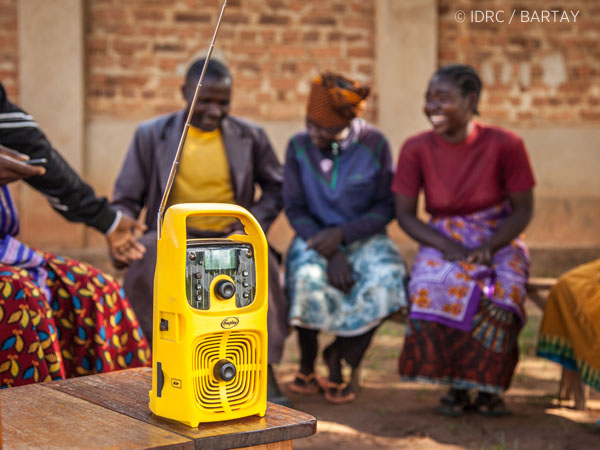Despite the well-documented advantages of agricultural innovations, there are significant hurdles for farmers to adopt them, such as: lack of information reaching remote farmers, ineffective national extension service, and input supply systems that do not respond to men and women farmers’ needs. This denies millions of smallholder farmers the opportunity to learn and apply improved and efficient agronomic practices that improve productivity and household food security.
These were some of the motivations behind a program called the Canadian International Food Security Research Fund (CIFSRF), funded by the International Development Research Centre (IDRC) and Global Affairs Canada. The program was designed to increase collaboration between farmers, researchers, and the public and private sectors to solve problems of food and nutrition insecurity. The program was particularly interested in looking at how to effectively and sustainably scale-up agricultural innovations in order to reach as many smallholder farmers, especially women, as possible.
Scaling up involves expanding, replicating or adapting different technologies and innovations to extend their reach to a greater number of people. Poor farmers are particularly difficult to reach since they are typically in remote locations, outside the reach of traditional extension services.
Reaching farmers is key, but for long term success and in order to ensure sustainability in adopting innovations, lessons learnt from CIFSRF on using ICTs are as follow:
- Farmers need access to high-quality and timely inputs. Extension alone is less effective in encouraging farmers to adopt improved agricultural technologies and practices. Access to quality seeds, fertilizers, agrochemicals etc. is a key component. The combination of knowledge generated by the extension services received and the access to those improved inputs and services makes the adoption more likely to happen and remain.
- Technical know-how on the use of innovations needs to be useful and accurate. For example, inaccurate information about variety types or market sources for farmers to sell their seeds can negatively affect vulnerable farmers, who have little room for risk taking. This in turn causes farmers to distrust the source of the information and be hesitant to use it again.
- Extension services need to be more interactive, personalized and delivered by a trusted intermediary. Innovations must demonstrate with evidence that they have a value to farmers and impact on poverty reduction or farmers will not adopt. When this evidence is delivered by a trusted source to farmers, and allows them to engage and ask questions, they will be more likely to use the innovation.
- Combining coordinated ICT methods with face-to-face services and personal communication with farmers increases the uptake of innovations versus using a single method. When farmers receive multiple, conflicting messages from different sources working in the area it can have a negative effect on farmers’ uptake of the innovations. As was found in Tanzania, when services were offered in a systematic and coordinated way, rather than ad hoc from different organizations, ICTs reinforced messages and resulted in a better uptake of the innovations.
- Use incentives to create a “pull” for farmers to initially adopt an innovation. Initially these incentives can be subsidized via NGOs, government extension or the private sector (such as e-vouchers, prizes, coupons, discounts), or can be fee-based by assessing farmers willingness-to-pay then sold via agro-dealers/vets, agro-hubs or export marketers. It is promising that farmers indicated their willingness to pay for SmartEx advisory services in Ghana, but given the limited resources of smallholder farmers, extension services may always require some degree of public investment.
- ICT tools and information need to be targeted and adapted differently for men and women to ensure equitable access. Women are generally less likely than men to use or own digital technologies. In order for countries to use ICTs to promote the empowerment of women, governments need to be well-informed about how the ICT ecosystem works in practice, the barriers to accessibility and how challenges can be overcome. Capacity building on ICTs can help boost skills and provide access to information to put women on an equal footing to men. For example in Tanzania and Ghana, airing radio programs at scheduled times convenient to women farmers and on meeting days of women farmer groups, having women co-hosts on the radio, and organizing women-only community radio listener groups were shown to increase women’s access and use of information about innovations.
For more information on the projects and lessons from CIFSRF visit www.idrc.ca/cifsrf
Wendy Manchur is a Program Officer with the Agriculture and Food Security Program at the International Development Research Centre (IDRC).
Contributions to YenKasa Africa are written by partner organizations to showcase their work. The views expressed in these contributions do not necessarily reflect those of all YenKasa Africa partners.

